Key Takeaways for Arthritis in Dogs
- Arthritis affects up to 80% of senior dogs (8+ years), but can begin developing as early as one year of age in 20% of dogs.
- Natural supplements like glucosamine, green-lipped mussel, and omega-3 fatty acids can significantly reduce inflammation and support joint repair without the side effects of prescription medications.
- Weight management is crucial - even a 6-10% reduction in body weight can dramatically improve mobility and reduce pain in arthritic dogs.
- A multi-modal approach combining supplements, diet modifications, physical therapy, and home adaptations offers the most comprehensive relief for arthritic dogs.
- JPS Natural Pet Supplements offers specialised formulas with Boswellia and green-lipped mussel that have shown visible improvements in dogs' mobility within days of starting treatment.
When your once-playful pup starts slowing down on walks or struggles to climb the stairs, arthritis might be the culprit. Canine arthritis is far more common than most pet parents realise, affecting dogs of all ages and breeds. Early intervention with natural therapies can make a world of difference in your dog's comfort and quality of life.
At JPS Natural Pet Supplements, we understand the heartbreak of watching your furry companion struggle with joint pain. Our specialised formulas with powerful anti-inflammatory ingredients like Boswellia and Turmeric have helped countless dogs regain their mobility and zest for life without harsh pharmaceutical side effects.
Signs Your Dog May Be Suffering from Arthritis
Arthritis in dogs often develops gradually, making it easy to miss the early warning signs. Many pet parents mistakenly attribute their dog's slowing pace to "just getting older" when intervention could help preserve mobility and comfort. Recognising the symptoms early can make a significant difference in managing this progressive condition.
Common Symptoms That Indicate Joint Pain
Dogs can't tell us when they hurt, so it's crucial to watch for physical indicators of joint discomfort. Difficulty rising after rest, known as "morning stiffness," is often the first noticeable sign of arthritis. You might also observe your dog limping or favouring certain limbs, especially after exercise or during cold weather. Many arthritic dogs develop an audible clicking or popping sound (crepitus) in their affected joints as they move. Some dogs may also begin licking or chewing at painful joints, creating hot spots or irritated areas on their skin.
Behavioural Changes That Signal Discomfort
Pain changes behaviour, even in our stoic canine companions. A previously energetic dog who suddenly seems reluctant to play, go for walks, or climb stairs may be experiencing joint pain. Many arthritic dogs become irritable when touched in certain areas or resist being petted or handled. Changes in sleeping patterns are common, too - your dog might struggle to get comfortable or sleep more than usual to avoid movement. Some dogs even show decreased appetite or depression as chronic pain affects their overall well-being.
How Arthritis Affects Different Breeds and Ages
While we typically associate arthritis with senior dogs, the reality is that joint problems can begin much earlier. Large and giant breeds like Labrador Retrievers, German Shepherds, and Great Danes are genetically predisposed to joint issues, often showing signs by middle age. Breeds with inherent skeletal abnormalities, such as Bulldogs, Dachshunds, and Scottish Terriers, face higher risks due to their body structure. Sporting and working dogs that experience repetitive stress on joints may develop early arthritis from their active lifestyles. Even small breeds aren't immune - Cavalier King Charles Spaniels and Shih Tzus commonly develop arthritis in their senior years.
Veterinary Treatments That Relieve Canine Joint Pain
While natural approaches form the foundation of long-term arthritis management, veterinary interventions play an important role in controlling pain and inflammation during flare-ups. A comprehensive approach often combines conventional medicine with natural therapies for optimal results. Always consult with your Vet before starting or stopping any treatment regimen.
Prescription Medications for Pain Management
Vets often prescribe non-steroidal anti-inflammatory drugs (NSAIDs) specifically formulated for dogs to manage arthritis pain. Popular options include Carprofen (Rimadyl), Meloxicam (Metacam), and Deracoxib (Deramaxx), which work by reducing inflammation in the joints. Unlike human NSAIDs like ibuprofen or aspirin, these medications are designed to be safer for canine systems, though they still require careful monitoring for side effects.
For dogs who can't tolerate NSAIDs or need additional pain control, your vet might recommend medications like Gabapentin or Amantadine. These work differently from anti-inflammatories, targeting the nervous system to modify pain signals. Some Vets also prescribe Tramadol, though recent studies suggest its effectiveness in dogs may be limited compared to other options.
It's crucial to understand that while these medications can provide significant relief, they don't address the underlying joint degeneration and may cause liver or kidney issues with long-term use. This is why many holistic Vets recommend using prescription medications sparingly during severe flare-ups while focusing on natural therapies for daily management.
Injectable Therapies Like Adequan and PRP
Adequan (polysulfated glycosaminoglycan) injections represent one of the most effective veterinary treatments for canine arthritis. Unlike pain medications that mask symptoms, Adequan helps protect cartilage and stimulates joint fluid production. The treatment typically involves a series of injections given over several weeks, with many dogs showing improved mobility after the whole course.
Platelet-Rich Plasma (PRP) therapy offers another injectable option that harnesses your dog's own healing capabilities. This procedure involves drawing your dog's blood, processing it to concentrate healing platelets, and then injecting this concentration directly into affected joints. The growth factors in PRP can stimulate tissue repair and reduce inflammation naturally, though multiple treatments may be needed for optimal results.
Surgical Options for Severe Cases
For dogs with advanced arthritis that doesn't respond to conservative treatments, surgical intervention may provide relief. Joint fusion (arthrodesis) permanently immobilises a severely damaged joint, eliminating the pain of bone-on-bone contact. While this sacrifices joint movement, it can dramatically improve quality of life in appropriate cases.
Total joint replacement, most commonly performed on hips and elbows, involves replacing the damaged joint surfaces with prosthetic components. Though expensive and requiring specialised surgical expertise, these procedures can restore near-normal function in severely arthritic joints. In less severe cases, arthroscopic procedures may be used to clean up joint surfaces and remove bone spurs that contribute to inflammation.
7 Natural Supplements That Help Ease Dog Arthritis
Natural supplements form the cornerstone of holistic arthritis management, offering powerful anti-inflammatory and joint-supporting benefits without the side effects associated with long-term medication use. These supplements work best when started early in the disease process and given consistently over time. The cumulative effect of these natural remedies can significantly improve your dog's comfort and mobility.
When choosing supplements, quality matters tremendously. Look for products with third-party testing, clear ingredient lists, and appropriate dosing information for your dog's size. Many pet parents report best results when combining several complementary supplements, such as Doggie Joint with Green Lipped Mussel, rather than relying on a single approach.
1. Glucosamine and Chondroitin
Glucosamine and chondroitin remain the most widely recommended supplements for joint health, providing the building blocks needed for cartilage repair and maintenance. Glucosamine stimulates the production of glycosaminoglycans, key components of joint cartilage, while chondroitin helps attract fluid to the joints and inhibits enzymes that break down cartilage. Together, they work synergistically to slow joint deterioration and reduce inflammation.
For optimal results, look for supplements providing 20-25mg of glucosamine per pound of body weight daily. Quality products typically combine these ingredients with manganese, which activates the enzymes responsible for cartilage synthesis. While results aren't immediate, most dogs show noticeable improvement within 4-6 weeks of consistent supplementation.
2. Omega-3 Fatty Acids (Fish Oil)
Research Highlight: A landmark study published in the Journal of the American Veterinary Medical Association found that dogs receiving omega-3 fatty acid supplementation showed significantly improved ability to rise from a resting position and increased play activity compared to the control group. Owners reported improved mobility in 82% of supplemented dogs.
Omega-3 fatty acids, particularly EPA and DHA found in fish oil, function as natural anti-inflammatories by inhibiting inflammatory pathways in the body. These potent compounds not only reduce joint inflammation but also support brain health, improve skin and coat condition, and promote overall well-being. For arthritic dogs, high-quality fish oil can make a remarkable difference in mobility and comfort levels.
Dosing is critical for omega-3 supplementation, with research suggesting 50-100mg of combined EPA/DHA per kilogram of body weight daily for therapeutic effects. Marine-sourced omega-3s from wild-caught fish or krill oil provide the most bioavailable forms. When selecting fish oil supplements, look for products tested for heavy metals and environmental toxins, with added vitamin E to prevent oxidation.
Many pet parents notice improved mobility within 2-3 weeks of starting proper omega-3 supplementation, with maximum benefits appearing after 8-12 weeks. The anti-inflammatory effects of omega-3s can sometimes allow for reduced dosages of prescription pain medications when used under veterinary supervision.
3. Green-Lipped Mussel Extract
Green-lipped mussel extract, derived from mussels harvested in New Zealand, contains a unique profile of omega-3 fatty acids, glycosaminoglycans, and natural compounds that specifically target joint inflammation. Unlike fish oil, which provides primarily EPA and DHA, green-lipped mussel contains ETA (eicosatetraenoic acid), which blocks the COX and LOX inflammatory pathways simultaneously. This makes it particularly effective for managing joint pain in sensitive dogs.
Green-lipped mussel

At JPS Natural Pet Supplements, our Natural Doggie Joint GLM formula combines green-lipped mussel with glucosamine and calcium for comprehensive joint support. Pet owners consistently report visible improvements in their dogs' mobility, with one customer noting: "Visible improvement in our dog's movement after just a couple of days taking the tablets."
4. Turmeric (Curcumin)
Turmeric's active component, curcumin, offers potent anti-inflammatory benefits by inhibiting multiple inflammatory enzymes and cytokines. Its mechanisms closely resemble those of prescription NSAIDs, but without the potential side effects on the liver and kidneys. Beyond reducing inflammation, curcumin acts as an antioxidant, protecting joint tissues from damaging free radicals that contribute to arthritis progression.
The challenge with curcumin lies in its poor absorption, which is why quality supplements enhance bioavailability through various methods. Our formulations include black pepper extract (piperine) to increase absorption by up to 2000%. For maximum benefit, we recommend products providing 15-20mg of curcumin per pound of body weight daily, divided into two doses.
Curcumin works synergistically with other anti-inflammatory supplements like Boswellia, creating a more powerful effect than either ingredient alone. Most dogs show improvement within 3-4 weeks of consistent supplementation, with reduced stiffness after rest being one of the first noticeable benefits.
5. CBD Oil for Pain Relief
Cannabidiol (CBD) oil has gained significant attention for managing canine arthritis through its interaction with the endocannabinoid system, which helps regulate pain and inflammation. Unlike THC, CBD doesn't produce psychoactive effects, making it safe for dogs when properly dosed. Research indicates that CBD works through multiple mechanisms, including reducing inflammatory cytokines and modulating pain perception.
When selecting CBD products for your arthritic dog, choose full-spectrum hemp extracts specifically formulated for pets, with third-party testing to verify CBD content and confirm the absence of contaminants. Starting with approximately 0.5mg of CBD per kilogram of body weight twice daily provides a good baseline, with adjustments based on your dog's response. Many pet parents report noticeable pain relief within 30-60 minutes of administration, with cumulative benefits developing over several weeks of consistent use. Only a Vet can prescribe CBD Oil for animals in the UK.
6. Boswellia Serrata
Boswellia serrata, derived from the frankincense tree, contains powerful Boswellic acids that specifically target 5-lipoxygenase, an enzyme responsible for producing inflammatory leukotrienes in the joints. This ancient herbal remedy has demonstrated impressive anti-inflammatory effects comparable to prescription NSAIDs in numerous studies. Unlike many pharmaceuticals, Boswellia doesn't just mask pain—it actually helps inhibit the breakdown of cartilage while improving blood supply to joint tissues.
Boswellia serrata

Our Natural Dog Joint Supplement with Boswellia & Turmeric combines these two powerful anti-inflammatory ingredients for maximum effect. The recommended dosage is typically 10-15mg of Boswellic acids per pound of body weight daily. When administered consistently, most dogs show noticeable improvement within 2-3 weeks, with reduced stiffness and increased willingness to exercise being common first signs of improvement.
7. MSM (Methylsulfonylmethane)
MSM provides bioavailable sulphur, a critical element for maintaining healthy joint cartilage and connective tissue. This organic sulphur compound helps reduce joint inflammation while supporting the body's natural ability to form new joint and muscle tissue. MSM works synergistically with glucosamine and chondroitin, enhancing their effectiveness when combined in comprehensive joint formulas.
Beyond its structural benefits, MSM has been shown to function as a natural analgesic by blocking pain impulses along nerve fibres. It also improves cellular permeability, allowing for better nutrient absorption and waste removal from cells. For optimal results, look for supplements providing 50-100mg of MSM per 10 pounds of body weight daily, preferably divided into morning and evening doses.
Diet Changes That Improve Joint Health
What your dog eats directly impacts their joint health and inflammation levels throughout the body. Dietary interventions represent one of the most powerful yet often overlooked approaches to managing canine arthritis. Making thoughtful changes to your dog's nutrition can significantly reduce inflammatory processes while providing the building blocks needed for joint repair and maintenance.
Anti-Inflammatory Raw Food Diets
Raw food diets rich in natural anti-inflammatory ingredients can dramatically improve symptoms in arthritic dogs. The foundation of these diets includes high-quality animal proteins that provide complete amino acid profiles necessary for tissue repair. Fresh, raw vegetables like kale, spinach, and broccoli contribute antioxidants that fight oxidative stress in the joints. The inclusion of berries (particularly blueberries and cranberries) adds powerful plant compounds that reduce inflammatory markers. Healthy fats from sources like cold-water fish, coconut oil, and chia seeds provide essential fatty acids that modulate inflammation pathways.
When transitioning to a raw diet, work with a canine nutritionist to ensure a proper balance of nutrients. Many pet parents report seeing improvements in their dog's mobility within just 2-3 weeks of switching to anti-inflammatory feeding protocols. The absence of processed ingredients and artificial additives further reduces the body's inflammatory burden, allowing natural healing processes to function more effectively.
Weight Management for Joint Stress Reduction
Impact of Weight Loss on Arthritis: Research from the University of Pennsylvania's School of Veterinary Medicine found that a weight loss of just 6-8% can produce measurable improvements in lameness scores in overweight dogs with hip osteoarthritis. Dogs who achieved 9-10% weight loss showed clinical improvements comparable to those typically seen with anti-inflammatory medications.
Excess weight places tremendous stress on already painful joints, creating a vicious cycle of decreased activity and further weight gain. Even a few extra pounds can significantly impact your dog's comfort and mobility. For example, a dog carrying just 5 pounds of excess weight experiences 20-25 pounds of additional pressure on their joints with each step. Implementing a structured weight loss program under veterinary supervision can produce dramatic improvements in arthritic symptoms, sometimes reducing or eliminating the need for pain medications.
Successful weight management combines portion control, appropriate food choices, and consistent, gentle exercise. Rather than drastically reducing food volume, which can leave your dog feeling hungry and deprived, focus on nutrient-dense, lower-calorie options that provide satiety. Vegetables like green beans, carrots, and pumpkin can add volume to meals without significant calories. For treats, consider dehydrated sweet potato or apple slices rather than commercial biscuits that may contain inflammatory grains and additives.
Processed Commercial Dog Foods to Avoid That Worsen Inflammation
Many commercial dog foods contain ingredients that actively promote inflammation in the body, potentially worsening arthritic symptoms. Highly processed grains like corn, wheat, and soy introduce inflammatory compounds while providing limited nutritional value. Artificial preservatives, colourings, and flavour enhancers such as BHA, BHT, and ethoxyquin have been linked to increased oxidative stress and inflammation. Some rendered meat by-products and meat meals may contain pro-inflammatory fats if derived from low-quality sources.
Perhaps most concerning for arthritic dogs are foods with excessive omega-6 fatty acids without balancing omega-3s. Many commercial foods use ingredients like corn oil, safflower oil, or sunflower oil, which skew the omega-6: omega-3 ratio toward inflammation. Instead, look for foods with named meat sources as the first ingredient, limited carbohydrates from low-glycaemic sources, and healthy fat profiles that include fish oil or flaxseed.
- Avoid foods with corn, wheat, soy, and by-products as primary ingredients
- Skip products containing artificial preservatives (BHA, BHT, ethoxyquin)
- Limit treats with refined sugars or excessive carbohydrates
- Choose foods with omega-6: omega-3 ratios of 5:1 or lower
- Consider grain-free formulations with novel protein sources if food sensitivities are suspected
Physical Therapy Options for Arthritic Dogs
Physical therapy provides tremendous benefits for arthritic dogs by improving joint mobility, strengthening supporting muscles, and enhancing overall quality of life. These therapeutic approaches work in harmony with nutritional interventions and supplements to create comprehensive arthritis management. The goal isn't just pain relief—it's maintaining and even improving functional abilities despite the underlying joint changes.
Hydrotherapy Benefits and Techniques
Water-based therapy offers unparalleled benefits for arthritic dogs by providing resistance for muscle strengthening while eliminating the jarring impact on painful joints. The buoyancy of water supports 60-90% of your dog's body weight, depending on water depth, allowing for movement patterns that might be impossible or painful on land. The hydrostatic pressure of water also reduces joint swelling and improves circulation to damaged tissues, accelerating healing processes.
Professional canine hydrotherapy typically takes place in either underwater treadmills or therapeutic swimming pools. Underwater treadmills allow precise control of water depth, speed, and resistance while maintaining a consistent gait pattern. Swimming sessions encourage a full range of motion in all limbs while providing cardiovascular benefits and muscle toning. Many rehabilitation centres offer "assisted swimming" with therapist support for dogs who are fearful or have limited mobility.
Even without access to professional facilities, you can create simple hydrotherapy opportunities at home. Gentle wading in shallow water at a lake or beach shore provides therapeutic movement with natural resistance. For smaller dogs, supervised bathtub sessions with slow, controlled movement can help maintain joint mobility. Consistent sessions 2-3 times weekly typically produce noticeable improvements in gait and willingness to move within 3-4 weeks.
Gentle Exercise Routines That Maintain Mobility
Controlled, low-impact exercise is essential for maintaining muscle mass and joint function in arthritic dogs. Short, frequent walks on soft surfaces like grass or dirt paths provide stimulus without excessive jarring. Aim for 3-4 short walks daily rather than one long session, which can lead to fatigue and increased pain. Gentle inclines (not steep hills) help build hind limb strength without stressing joints. Controlled leash walking in figure-eight patterns promotes weight shifting and balance awareness.
Indoor activities can be equally beneficial during weather extremes or pain flares. Slow stepping over raised poles or cushions encourages joint flexion and extension within a comfortable range. "Target training" that encourages gentle stretching to touch a target with the nose or paw combines mental stimulation with physical therapy. Puzzle toys that require movement to release treats motivate arthritic dogs who may be reluctant to exercise due to discomfort.
Massage Methods to Ease Joint Stiffness
Therapeutic massage offers immediate comfort while addressing the muscle tension that often accompanies joint pain. Gentle stroking techniques (effleurage) improve circulation to tissues surrounding painful joints, reducing stiffness, and promoting relaxation. Circular movements with light pressure help warm and prepare muscles before progressing to deeper techniques. Kneading motions (pétrissage) help release trigger points and adhesions in chronically tight muscles that develop as dogs alter their movement patterns to avoid pain.
Focus particular attention on muscle groups that support and stabilise affected joints. For hips and knees, the quadriceps, hamstrings, and gluteal muscles often develop compensatory tension. With elbow and shoulder arthritis, the triceps, biceps, and muscles along the spine frequently become contracted. Even 5-10 minutes of daily massage can produce meaningful improvements in comfort and mobility. Most dogs quickly learn to enjoy these sessions, actively presenting areas that need attention.
Professional Rehabilitation Programs
Certified canine rehabilitation therapists offer specialised programs tailored to your dog's specific needs. These experts utilise multiple modalities, including therapeutic exercise, manual therapy, and physical agents, to address pain and functional limitations. A typical rehabilitation program begins with a comprehensive assessment of gait, range of motion, pain levels, and functional abilities. This baseline evaluation allows for the development of targeted interventions and provides metrics for measuring progress.
Professional programs typically combine in-clinic sessions with home exercise protocols. Therapists might employ tools like balance boards, therapy balls, and resistance bands during supervised sessions while teaching owners simpler techniques for daily home care. Many rehabilitation facilities also offer modalities like therapeutic ultrasound, neuromuscular electrical stimulation, and pulsed electromagnetic field therapy that can significantly reduce pain and inflammation between sessions.
The investment in professional rehabilitation often pays dividends in improved quality of life and reduced medication needs. Many pet insurance plans now cover rehabilitation services when prescribed by a veterinarian, making this option more accessible for many pet owners.
Home Modifications That Help Your Arthritic Dog
Creating an arthritis-friendly home environment can dramatically improve your dog's daily comfort and independence. Simple modifications that reduce joint stress allow your dog to maintain normal activities despite mobility challenges. These adaptations not only prevent pain but also help preserve your dog's confidence and mental well-being as they navigate life with arthritis.
Orthopaedic Beds That Provide Joint Support
A high-quality orthopaedic bed represents one of the most important investments for an arthritic dog. Memory foam mattresses with at least 4-7 inches of thickness distribute weight evenly, eliminating pressure points on painful joints. Look for beds with a waterproof inner liner and washable cover to maintain hygiene without compromising comfort. Some therapeutic beds incorporate gel cooling layers that help reduce joint inflammation during rest.
Strategic bed placement matters almost as much as the bed itself. Place multiple beds throughout your home so your dog can rest comfortably without navigating long distances. Keep at least one bed in areas where family gathers, allowing your dog to remain part of activities without standing for extended periods. For severely affected dogs, consider elevating food and water bowls to eating height so they don't need to bend down, which can be particularly painful with neck or shoulder arthritis.
Ramps and Steps for Easier Movement
Jumping in and out of cars or onto furniture places tremendous stress on arthritic joints, particularly in the spine, hips, and knees. Portable, lightweight ramps with non-slip surfaces provide safe access to vehicles for dogs of all sizes. For home use, permanent wooden ramps with gentle inclines (no steeper than 18-20 degrees) allow access to porches, decks, and entryways without navigating painful steps. Inside, padded steps or purpose-built pet stairs help dogs maintain independence in accessing beds, couches, and other favourite resting spots.
When introducing ramps or stairs, use positive reinforcement training with high-value rewards to help your dog feel confident with these new tools. Start with very short sessions, guiding your dog with a leash, if necessary, until they understand how to use the assistance devices safely. For dogs with significant mobility issues, consider harnesses with handles that allow you to provide gentle support during transitions.
Non-Slip Flooring Solutions
Slippery floors present a significant hazard for arthritic dogs, causing both immediate pain from muscle straining and long-term damage from falls. Hardwood, laminate, and tile surfaces become particularly treacherous for dogs with reduced joint stability and proprioception. Area rugs with non-skid backing create safe pathways through slippery areas. Interlocking foam tiles, available in decorative patterns, provide cushioning while improving traction in high-traffic zones. For whole-room solutions, carpet runners secured with double-sided tape offer consistent stability without permanent modifications.
For dogs who struggle even with improved flooring, non-slip booties or toe grips provide additional traction. Toe grips fit directly onto the nails, allowing natural contact with the ground while improving grip. Indoor-only fabric booties with rubber treads work well for many dogs, though some require time to adjust to the sensation. For severe mobility issues, consider body harnesses with handles that allow you to provide gentle support during movement across challenging surfaces.
Warm Compresses and Heat Therapy
Heat therapy provides remarkable relief for the muscle tension and joint stiffness that typically worsen in cold weather or after periods of inactivity. Microwavable heat packs designed for pets maintain safe temperatures while conforming to joint contours. Apply these to affected areas for 10-15 minutes before activity to improve mobility and reduce pain. Electric heating pads on low settings can provide comfort during more extended rest periods, though these should always include automatic shut-off features and be used with supervision.
For dogs who enjoy water, warm (not hot) baths with Epsom salts can reduce inflammation and muscle tension. Maintain water temperature between 100-102°F and limit soaking to 10-15 minutes to prevent overheating. After baths, thoroughly dry your dog and keep them warm, as the transition from warm water to cool air can increase stiffness. During cold weather, consider therapeutic coats or blankets that reflect body heat back to muscles and joints, helping maintain flexibility between active periods.
Alternative Therapies Worth Considering
Beyond conventional treatments and supplements, several alternative therapies have shown promising results for managing canine arthritis. These approaches often work through different mechanisms than traditional treatments, providing complementary benefits when incorporated into a comprehensive management plan. While research in some of these areas is still emerging, many Vets now recognise their value as part of an integrative approach.
- Acupuncture and acupressure
- Laser therapy (photobiomodulation)
- Therapeutic ultrasound
- Pulsed electromagnetic field therapy (PEMF)
- Medical massage and myofascial release
- Herbal therapies beyond those already mentioned
When exploring alternative options, seek practitioners with specific training in veterinary applications. These therapies are most effective when used alongside conventional treatments rather than as complete replacements. Many integrative veterinary practices now offer packages that combine several complementary approaches for maximum benefit.
The timing of alternative therapies can significantly impact their effectiveness. For example, acupuncture often provides maximum relief when administered during seasonal transitions when many dogs experience arthritis flares. Laser therapy may deliver optimal results when used immediately after physical activity to reduce inflammation and accelerate recovery.
Track your dog's response to each new therapy systematically, noting changes in mobility, comfort, and medication needs. This information helps refine the treatment approach over time, focusing resources on interventions that provide the most significant benefit for your dog.
Acupuncture for Pain Relief
Veterinary acupuncture involves the placement of thin needles at specific points along the body's meridians to stimulate natural pain relief and healing. This ancient technique has gained significant scientific support for managing osteoarthritis in dogs. Acupuncture stimulates the release of endorphins and enkephalins, the body's natural painkillers, while improving blood flow to damaged tissues. It also reduces muscle spasms that often accompany joint pain, creating a virtuous cycle of improved movement and reduced compensation patterns.

Laser Therapy Benefits
Class IV therapeutic laser therapy (photobiomodulation) delivers specific wavelengths of light that penetrate tissues and stimulate cellular energy production. This increased cellular activity accelerates the healing process in damaged joint tissues while reducing inflammation and pain. The photochemical effects include increased production of ATP (cellular energy), improved circulation through vasodilation, and reduced inflammatory mediators in the joint environment.
Most dogs require an initial intensive series of treatments (typically 6-8 sessions over 3-4 weeks) followed by maintenance therapy every 2-4 weeks, depending on severity. Each session usually takes just 5-10 minutes per treated area, making this a convenient option even for dogs who don't tolerate longer procedures well. Many dogs show noticeable improvement after just 1-2 treatments, with cumulative benefits developing over the full treatment course.
The non-invasive nature of laser therapy makes it particularly valuable for senior dogs or those with multiple health conditions that might limit medication options. It can be performed without sedation and causes no discomfort—in fact, many dogs find the gentle warming sensation pleasant and relaxing.
Clinical Outcomes: A controlled study published in the Journal of Veterinary Science found that dogs receiving laser therapy twice weekly for three weeks showed significant improvements in pain scores, weight-bearing, and range of motion compared to the control group. Most remarkably, these improvements persisted for up to 4 weeks after the treatment series ended.
Therapeutic Ultrasound
Therapeutic ultrasound delivers sound waves that penetrate deep into tissues surrounding affected joints, creating microscopic vibrations that generate controlled heating. This profound heating effect increases local circulation, relaxes tight muscles, and improves tissue elasticity around stiff joints. Unlike laser therapy, which primarily affects cellular metabolism, ultrasound creates physical changes in tissue properties that can temporarily increase the range of motion and reduce stiffness.
Creating Your Dog's Arthritis Management Plan
Managing canine arthritis effectively requires a personalised, multi-modal approach that addresses all aspects of your dog's condition. No single treatment works for every dog and needs often change as the disease progresses or as seasons change. The most successful management plans incorporate elements from several treatment categories while remaining flexible enough to adapt to your dog's changing needs.
Start by prioritising foundational interventions like weight management, appropriate exercise, and environmental modifications that benefit virtually all arthritic dogs. Layer targeted supplements based on your dog's specific presentation—dogs with early-stage arthritis often respond well to preventive formulas focusing on cartilage support. At the same time, those with advanced disease may need more aggressive anti-inflammatory approaches. Reserve pharmaceutical interventions for breakthrough pain or severe flares while working to minimise long-term reliance on these medications.
When to Consult Your Vet
While many natural remedies can be safely implemented at home, veterinary guidance remains essential throughout your dog's arthritis journey. Schedule a comprehensive evaluation if you notice new or worsening symptoms like difficulty rising, reluctance to walk or climb stairs, vocalisation when moving, or changes in temperament. Sudden lameness, especially when accompanied by heat, swelling, or inability to bear weight, requires immediate attention to rule out injuries or other acute conditions that may mimic or complicate arthritis.
Combining Treatments for Maximum Relief
The most effective arthritis management programs leverage synergies between different treatment modalities. Nutritional interventions provide the building blocks for tissue repair while reducing systemic inflammation. Supplements like glucosamine, chondroitin, and omega-3s work through different mechanisms to support joint health. Physical therapy maintains muscle strength and joint mobility, preventing the downward spiral of pain leading to inactivity and further weakness. Environmental modifications reduce daily joint stress, allowing natural healing processes to work more effectively. When these approaches work together, many dogs experience dramatic improvements in mobility and quality of life with minimal pharmaceutical intervention.
Monitoring Progress and Making Adjustments
Systematic monitoring helps track your dog's response to treatment and guides necessary adjustments. Keep a simple journal noting mobility, activity level, and apparent comfort on a 1-10 scale: record weather conditions, activity types and duration, and any treatments administered. Many pet parents find video documentation particularly valuable—short clips of your dog performing the same activities over time provide objective evidence of improvement or decline that might be difficult to perceive day-to-day. Share these observations with your veterinary team to help refine your approach and catch potential issues early.
Remember that arthritis management is a marathon, not a sprint. Some interventions, particularly nutritional supplements, may take 4-6 weeks to show their full benefit. Give each new approach adequate time before assessing its effectiveness, and avoid making multiple changes simultaneously, which makes it challenging to identify which interventions are helping. With patience and persistence, most arthritic dogs can maintain a good quality of life and comfortable mobility well into their senior years.
Frequently Asked Questions
Managing arthritis in our canine companions brings up many questions as pet parents navigate this common but complex condition. Here are answers to some of the most frequently asked questions about canine arthritis, its progression, and management options.
Did You Know? While we typically associate arthritis with older dogs, studies show that the disease process often begins much earlier than most pet parents realise. Radiographic evidence of arthritis can be present years before clinical signs become apparent, highlighting the importance of preventive measures even in young, apparently healthy dogs.
Understanding the natural course of arthritis helps set realistic expectations and guides proactive management strategies. While we can't completely reverse joint changes that have already occurred, thoughtful interventions can significantly slow progression and minimise the impact on your dog's quality of life. The goal is not just adding years to your dog's life but adding life to those years through effective pain management and mobility support.
Many pet parents find it helpful to connect with others navigating similar challenges. Online communities focused on canine arthritis provide valuable peer support, practical tips, and motivation to stay consistent with treatment protocols. Your veterinary team can also recommend local resources like rehabilitation centres, certified massage therapists, and appropriate exercise groups for dogs with mobility limitations.
How early can dogs develop arthritis?
Dogs can develop arthritis much earlier than most pet owners realise, with studies showing that up to 20% of dogs show radiographic evidence of joint changes before their first birthday. Large breeds with rapid growth patterns may develop early arthritis due to developmental orthopaedic conditions like hip or elbow dysplasia. Working and sporting dogs can develop traumatic arthritis from repetitive stress or injuries during activities. Even small breeds may show early arthritic changes, particularly in breeds with genetic predispositions to luxating patella or intervertebral disc disease. Early intervention with joint-supporting supplements, appropriate exercise, and weight management can significantly impact disease progression when started before clinical signs become apparent.
Can arthritis in dogs be cured entirely?
Arthritis cannot be completely cured in the sense of reversing structural joint changes that have already occurred. Once cartilage has worn down and bone changes have developed, these physical alterations remain permanent. However, the clinical symptoms of arthritis—pain, inflammation, and reduced mobility—can be effectively managed with appropriate interventions. Many dogs with well-managed arthritis lead active, comfortable lives despite their underlying joint changes. The focus should be on preventing further deterioration while managing symptoms through a combination of nutritional support, weight management, appropriate exercise, and targeted supplements or medications as needed. With comprehensive management, many arthritic dogs maintain a good quality of life for years after diagnosis.
Are certain breeds more prone to developing arthritis?
Yes, certain breeds have a significantly higher risk of developing arthritis due to genetic factors affecting joint structure and development. Large and giant breeds like Labrador Retrievers, German Shepherds, Golden Retrievers, and Bernese Mountain Dogs commonly develop hip and elbow arthritis related to dysplasia or osteochondrosis. Breeds with chondrodysplasia traits (shortened limbs), such as Dachshunds, Basset Hounds, and Corgis, face an increased risk of intervertebral disc disease and resulting spinal arthritis. Smaller breeds like Cavalier King Charles Spaniels, Yorkshire Terriers, and Chihuahuas frequently develop patellar luxation, leading to knee arthritis. Breeds with specific conformational traits like the deep chests of Boxers or the sloping backs of German Shepherds may experience biomechanical stresses that accelerate joint wear.
Understanding your dog's breed-specific risks allows for proactive measures like early radiographic screening, appropriate exercise modification, and preventive supplementation before clinical signs develop. For mixed-breed dogs, looking at the predominant breed influences can provide helpful guidance for potential arthritis risk and prevention strategies.
How quickly do joint supplements start working in dogs?
Joint supplements typically require consistent administration for 4-6 weeks before producing noticeable improvements in mobility and comfort. Unlike pain medications that work within hours, supplements like glucosamine and chondroitin operate by supporting the body's natural repair processes and modulating inflammation over time. Omega-3 fatty acids generally show effects within 2-3 weeks as they incorporate into cell membranes and alter inflammatory pathways. Herbs with direct anti-inflammatory effects, like Boswellia and turmeric, may produce improvements within 10-14 days. For maximum benefit, continue supplementation even after seeing improvement, as these products work best as preventive maintenance rather than as-needed treatments. The full benefits of comprehensive joint supplements often continue to develop over 2-3 months of consistent use.
Should I stop exercising my dog if they have arthritis?
Appropriate exercise remains essential for arthritic dogs, though the type, duration, and intensity may need modification. Completely restricting movement accelerates muscle atrophy and joint stiffness, creating a cycle of decreased function and increased pain. Instead, focus on controlled, low-impact activities like leash walking on soft surfaces, swimming, or gentle play sessions. Multiple short exercise periods (10-15 minutes) throughout the day typically work better than one more extended session. Monitor your dog during and after activity, watching for signs of pain or fatigue like lagging behind, sitting down, or increased limping. The right balance allows for maintaining muscle strength and joint mobility without triggering pain flares. Work with your Vet or a rehabilitation specialist to develop an exercise plan tailored to your dog's specific condition and fitness level.
For optimal support of your arthritic dog, consider JPS Natural Pet Supplements with powerful anti-inflammatory ingredients like Boswellia, turmeric, green lipped mussel, glucosamine and chondroitin that have been shown to improve mobility and comfort in dogs with joint pain significantly.





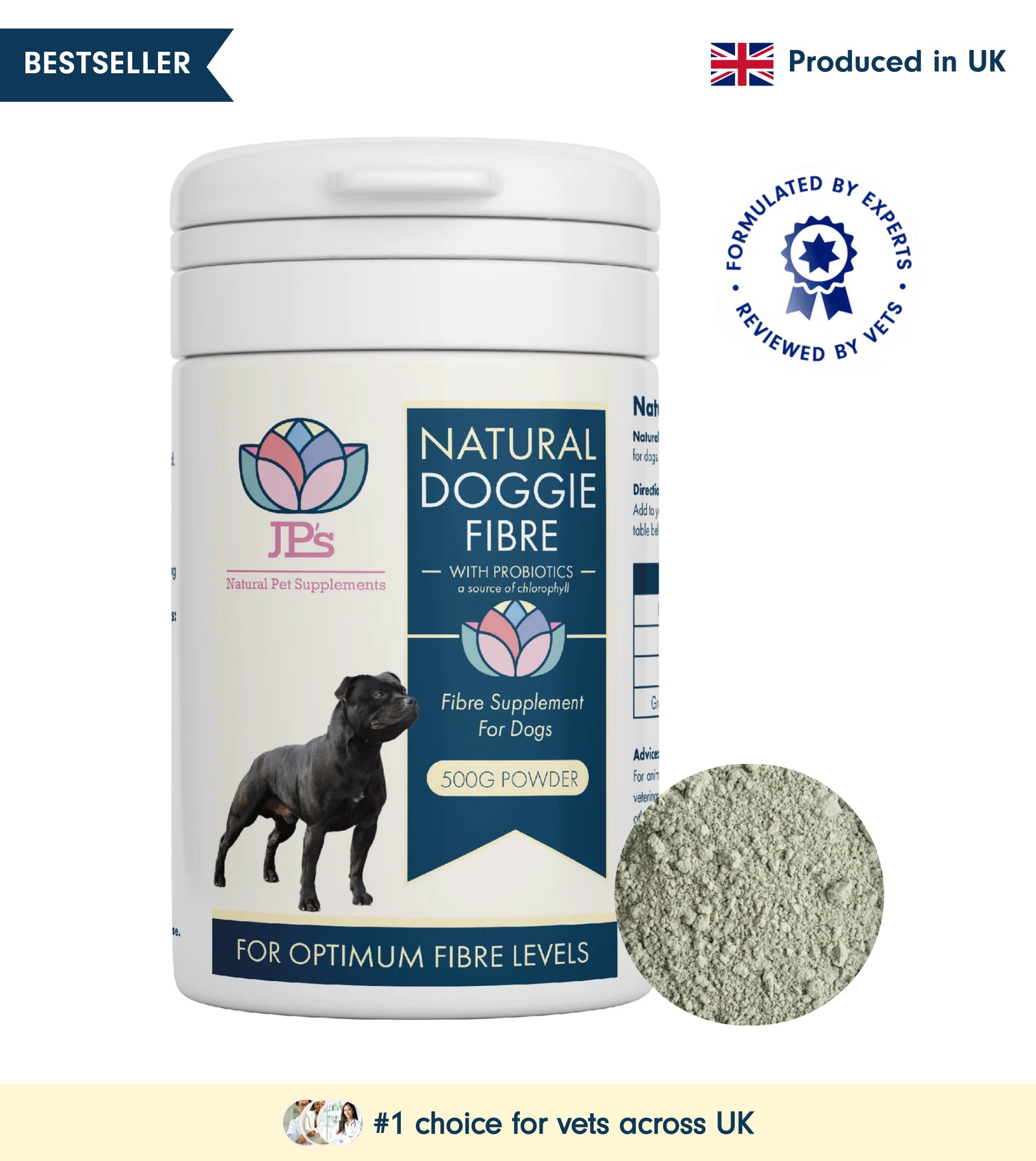

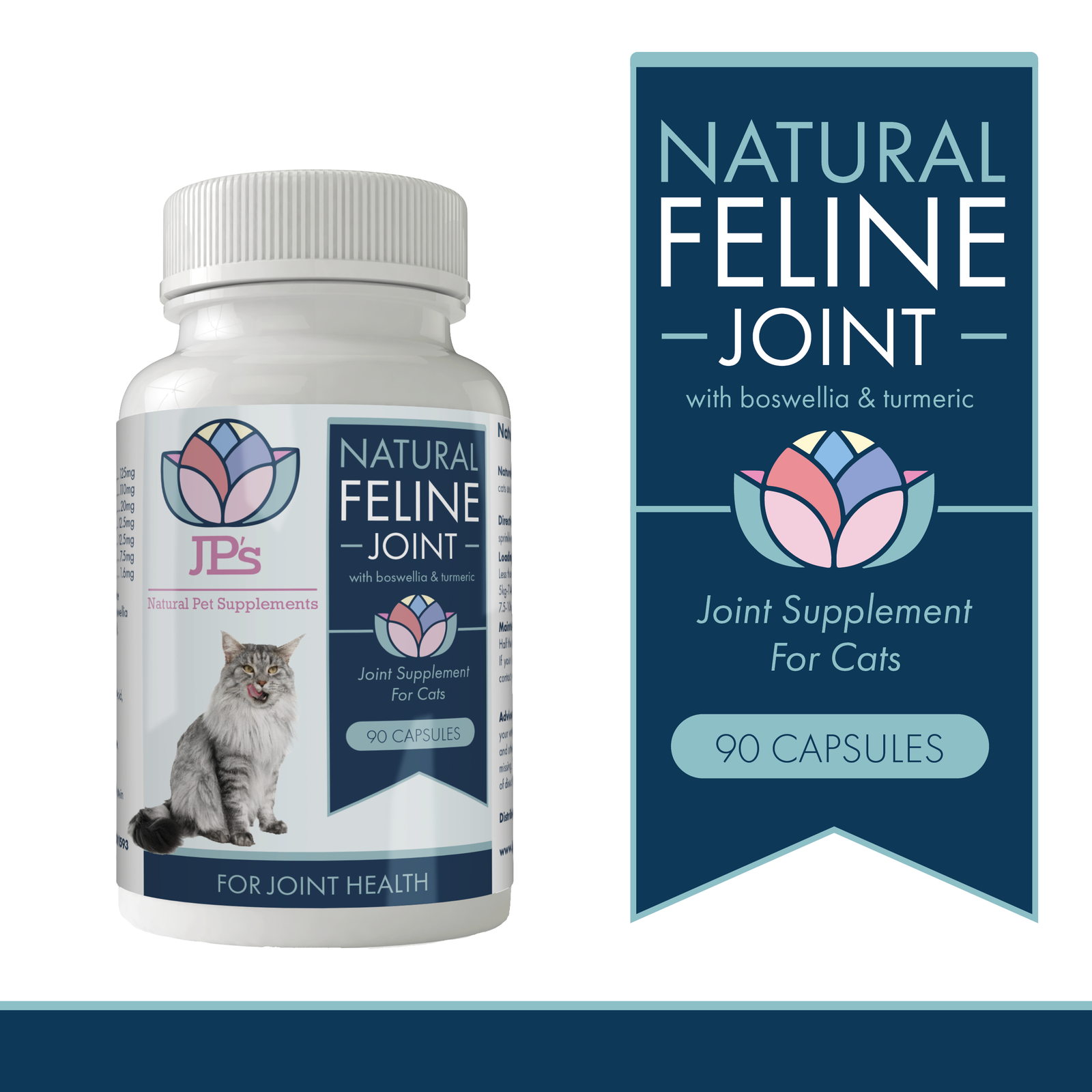
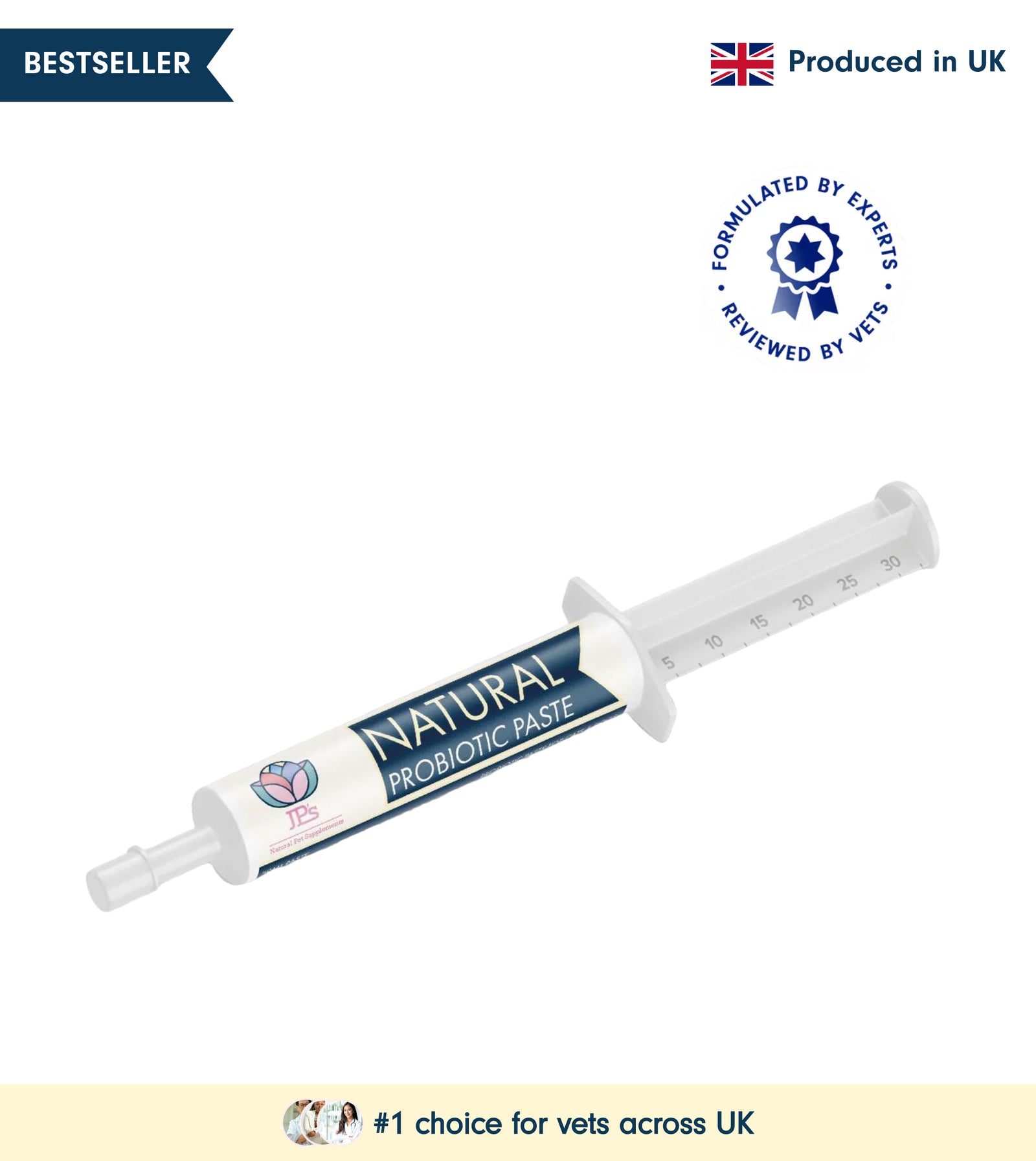
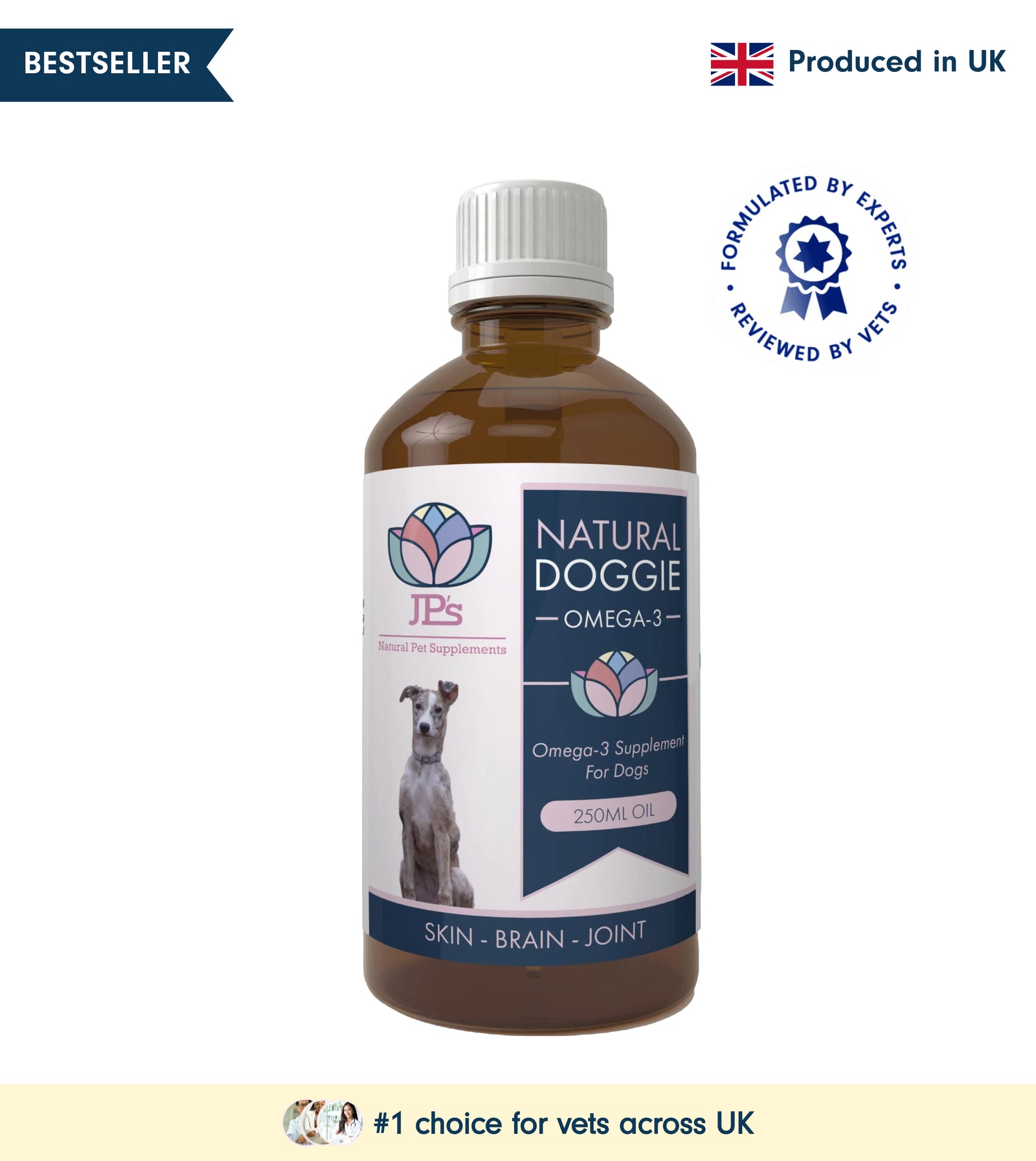
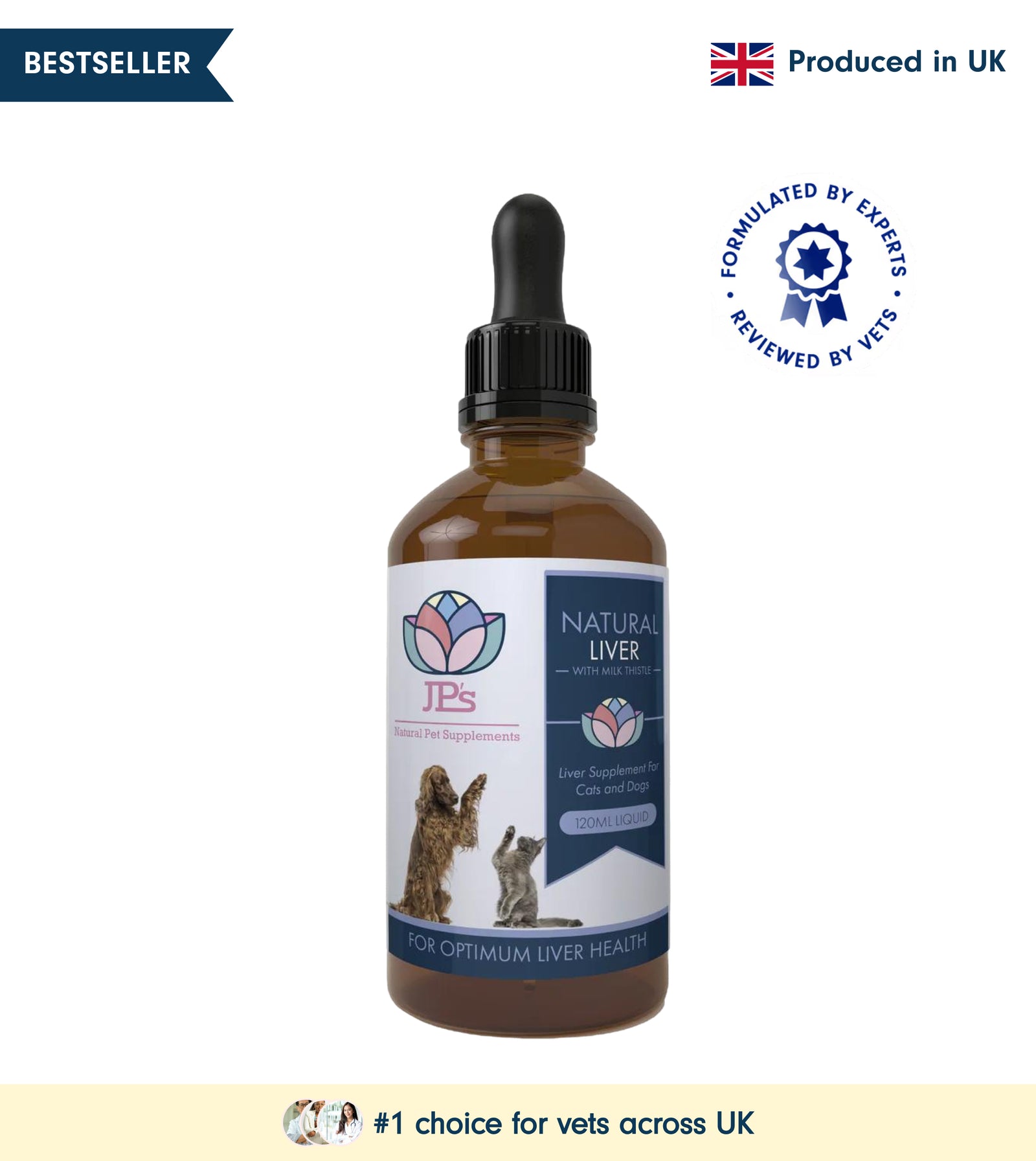
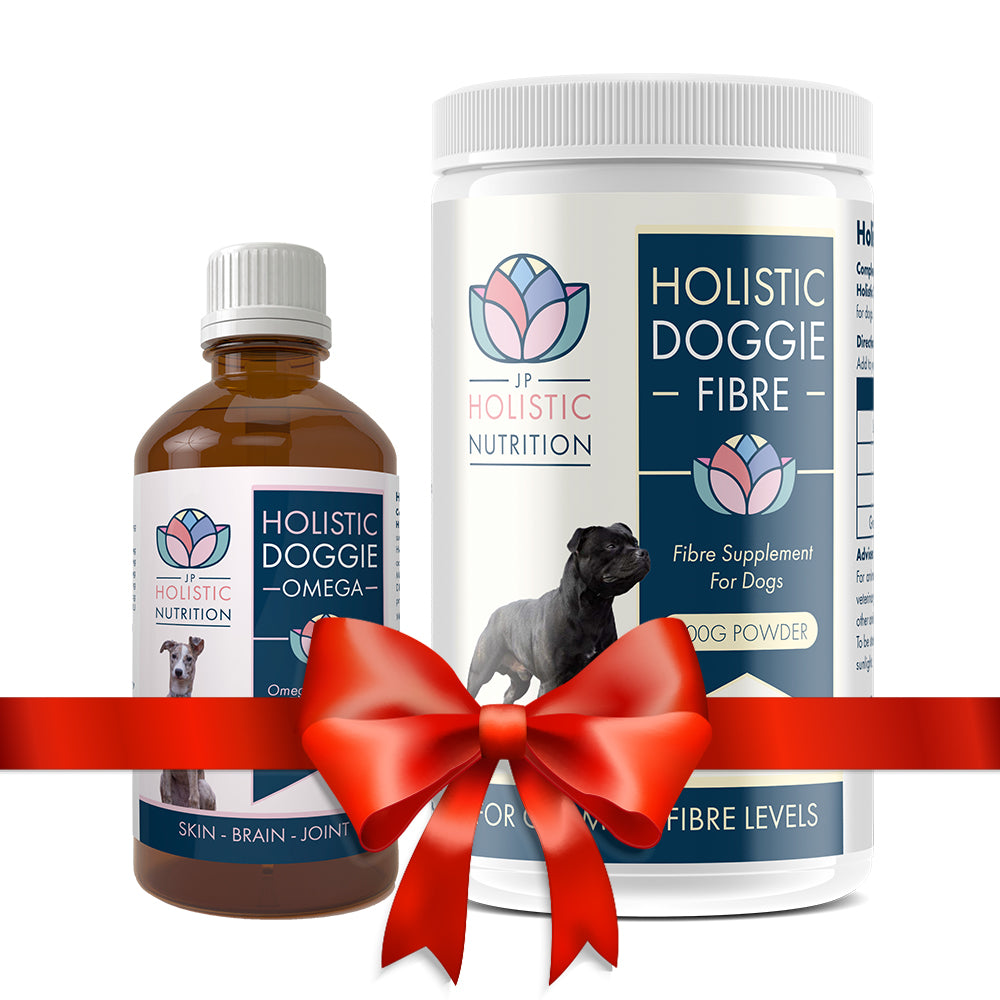


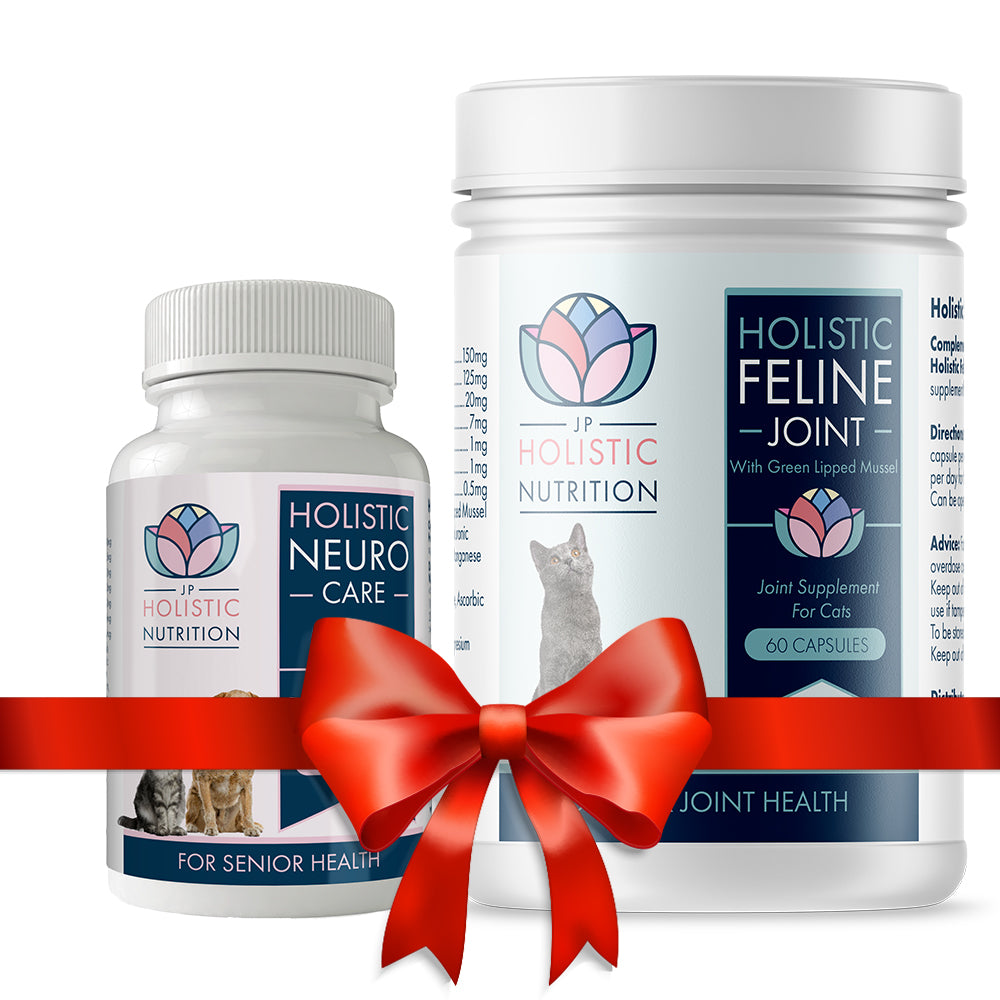




Leave a comment (all fields required)